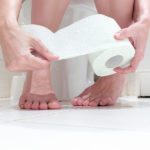By David Blyweiss, Advanced Natural Wellness
For years, women have been told that their best line of defense against breast cancer was an annual mammogram. But here’s a news flash—mammograms don’t prevent breast cancer! They are a diagnostic tool, and not a very good one at that. At best, mammograms detect less than 15 percent of invasive tumors. Instead, rapidly growing forms of breast cancer and slower growing tumors are most often found by women themselves, their partners or by a doctor during an annual exam.
Despite this, most women over 40 have followed the advice of the American Cancer Society and dutifully lined up for their yearly mammograms, believing they are doing everything they can to prevent breast cancer. Doctors, getting their information from this same source, agreed.
But late last year, the U.S. Preventive Services Task Force changed the rules when they told women age 50 to 74 to get a mammogram every other year instead of annually. The firestorm that ensued wasn’t surprising. After all, those who promote frequent mammograms—the American Cancer Society, the American College of Radiology and the Society of Breast Imaging—have a financial stake in American women following their advice. Anything less could have a negative impact on their bottom line.
Now, don’t get me wrong. Women who are at a high risk of developing breast cancer should get tested annually. But if women truly want to prevent this devastating and potentially disfiguring disease, they should take matters into their own hands by adopting my five healthy breast habits:
- Take 2,000 IU of Vitamin D3 daily. New research indicates that keeping Vitamin D3 blood serum levels at 40-60 ng/ml makes it difficult for breast cells to mutate, which is the first step in the development of cancer. Most women have dangerously low D3 levels.
- Avoid birth control and estrogen replacement drugs if you are over 40. Taking birth control drugs can double or triple a woman’s risk of developing breast cancer if she is over 40. This is especially true if she has used a pill, patch or ring for ten years or more. Taking synthetic hormone replacement drugs can increase your risk by 26 percent.
- Filter your drinking water. Using filtered water reduces your exposure to cancer-causing chemicals including endocrine-disrupting hormones that are often found in municipal water supplies and well water.
- Eat low estrogen foods. To limit exposure to excess strong or irritating estrogens, avoid foods that contain harmful hormones: e.g. milk that contains the rBGH growth hormone, and meat and poultry that contain added hormones. Drinking rBGH milk can raise a pre-menopausal woman’s risk of developing invasive breast cancer seven-fold. Avoid bisphenol A containing plastics for storing food or drinks, it is an endocrine disruptor and it has no place in your body. What should you eat? Foods that contain protective phytochemicals or sulfurophanes and glucosinolates, such as cabbage, broccoli, kale, Brussels sprouts and cauliflower are the best things a woman can add to her diet to prevent breast cancer. They direct the body’s estrogen metabolism towards the protective anticarcinogenic pathways and away from cancer producing metabolites.
- Don’t use alcohol and cigarettes and avoid consuming refined sugar. Even a few drinks every week can increase the risk of recurrence for breast cancer survivors by 34 percent. Giving up cigarettes can reduce a breast cancer survivor’s risk by as much as 120 percent. Maintaining normal blood sugar and insulin levels decreases a breast cancer survivor’s risk of a second diagnosis by 150 percent.
Remember, a mammogram doesn’t prevent breast cancer. But adopting these five healthy habits offers proactive protection. If you do feel the need for a yearly or every-other-year mammogram, increase its effectiveness by getting a thorough breast exam by a qualified ob/gyn. Taking the health of your breasts into your own hands instead of leaving it up to some random radiologist is the best way to stay cancer free for life.
The World's Quickest Solution for Ending Prostate and Urinary Misery
This has recently been revealed to be one of the only real breakthroughs in prostate health.
The seeds of a strange fruit (sometimes called "Chinese Apples") hold powerful phytonutrients that are a revolution in prostate health.
In fact, UCLA and Veterans Administration research have now proved this to be true.
Not only that, but it may be the worlds quickest solution for ending prostate misery.
Simply stated, these phytonutrients represent a huge step beyond beta sitosterol, saw palmetto, and other phytosterols alone.
Simply click HERE if you want to have fast prostate relief...restful, uninterrupted sleep...no more constant "urges to go"...enhanced virility...and optimal prostate support for life.
References:
Baum M. Should routine screening by mammography be replaced by a more selective service of risk assessment/risk management? Women’s Health (Lond Engl). 2010 Jan;6(1):71-6.
Colston KW. Vitamin D and breast cancer risk. Best Practice & Research. Clinical Endocrinology & Metabolism. 2008;22:587-599.
Crandall CJ. New-onset breast tenderness after initiation of estrogen plus progestin therapy and breast cancer risk. Archives of Internal Medicine. 2009;169:1684-1691.
Fernandez SV. Estrogen and Xenoestrogens in Breast Cancer. Toxicologic Pathology. 2009 Nov 21. [Epub ahead of print]





